
Salyersville is a home rule-class city on the Licking River in Magoffin County, Kentucky, in the United States. It is the seat of its county. According to the 2010 census, the population was 1,883.

A log cabin is a small log house, especially a less finished or less architecturally sophisticated structure. Log cabins have an ancient history in Europe, and in America are often associated with first generation home building by settlers.
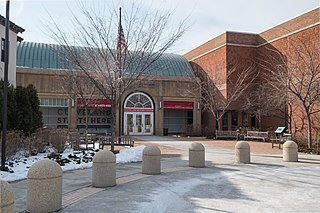
The Western Reserve Historical Society (WRHS) is a historical society in Cleveland, Ohio. The society operates the Cleveland History Center, a collection of museums in University Circle.

Abraham Lincoln Birthplace National Historical Park is a designated U.S. historic park preserving two separate farm sites in LaRue County, Kentucky, where Abraham Lincoln was born and lived early in his childhood. He was born at the Sinking Spring site south of Hodgenville and remained there until the family moved to the Knob Creek Farm northeast of Hodgenville when he was two years old, living there until he was seven years of age. The park's visitor center is located at the Sinking Spring site.
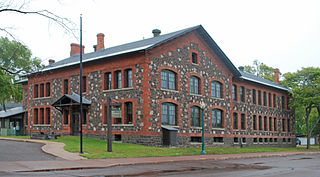
Keweenaw National Historical Park is a unit of the U.S. National Park Service. Established in 1992, the park celebrates the life and history of the Keweenaw Peninsula in the Upper Peninsula of the U.S. state of Michigan. As of 2009, it is a partly privatized park made up of two primary units, the Calumet Unit and the Quincy Unit, and 21 cooperating "Heritage Sites" located on federal, state, and privately owned land in and around the Keweenaw Peninsula. The National Park Service owns approximately 1,700 acres (690 ha) in the Calumet and Quincy Units. Units are located in Baraga, Houghton, Keweenaw, and Ontonagon counties.

Scadding Cabin is a 1794 log cabin on the grounds of Exhibition Place in Toronto, Ontario, Canada. It was built by John Scadding and is now the oldest surviving building in Toronto.

The Museum of Appalachia, located in Norris, Tennessee, 20 miles (32 km) north of Knoxville, is a living history museum that interprets the pioneer and early 20th-century period of the Southern Appalachian region of the United States. Recently named an Affiliate of the Smithsonian Institution, the museum is a collection of more than 30 historic buildings rescued from neglect and decay and gathered onto 63 acres (250,000 m2) of picturesque pastures and fields. The museum also preserves and displays thousands of authentic relics, maintains one of the nation's largest folk art collections, and hosts performances of traditional Appalachian music and annual demonstrations by hundreds of regional craftsmen.

The Kentucky Historical Society (KHS) was originally established in 1836 as a private organization. It is an agency of the Kentucky state government that records and preserves important historical documents, buildings, and artifacts of Kentucky's past. The KHS history campus, located in downtown Frankfort, Kentucky, includes the Thomas D. Clark Center for Kentucky History, the Old State Capitol, and the Kentucky Military History Museum at the State Arsenal. KHS is a part of the Kentucky Tourism-Arts and Heritage Cabinet, is fully accredited by the American Alliance of Museums, is a Smithsonian affiliate, and endorses the History Relevance statement. The mission of the KHS is to educate and engage the public through Kentucky’s history in order to confront the challenges of the future. The KHS allows the public access to their resources through the online Library catalog along with the in-person Library.

The John Hay Center is on the eastern edge of the Salem Downtown Historic District in Salem, Indiana. It comprises:

White Pine Village is an outdoor museum in Ludington, Michigan, containing nineteenth-century buildings and related historical items. The thirty buildings in the village contain artifacts relating to pioneer lumbering, music, farming, shipping, sports, and businesses. Occasionally performances are done on blacksmithing, spinning, leatherworking, candlemaking, wood carving, and basket making. The museum's centerpiece is an 1849 farmhouse.

Old Fort Harrod State Park is a park located in Harrodsburg, Kentucky in the United States. The park encompasses 15 acres (6.1 ha) and features a reconstruction of Fort Harrod, the first permanent American settlement in the state of Kentucky. The park was founded in November 1934 as Pioneer Memorial State Park, and dedicated by President Franklin D. Roosevelt and Governor Ruby Laffoon.

The Idaho State Historical Society (ISHS) is a historical society located in the U.S. state of Idaho that preserves and promotes the state's cultural heritage.

The dogtrot, also known as a breezeway house, dog-run, or possum-trot, is a style of house that was common throughout the Southeastern United States during the 19th and early 20th centuries. Some theories place its origins in the southern Appalachian Mountains. Some scholars believe the style developed in the post-Revolution frontiers of Kentucky and Tennessee. Others note its presence in the South Carolina Lowcountry from an early period. The main style point was a large breezeway through the center of the house to cool occupants in the hot southern climate.

Grey Roots Museum and Archives began as a County museum in 1955. Since then it has taken a large role in preserving the history and promoting the heritage of Grey County.
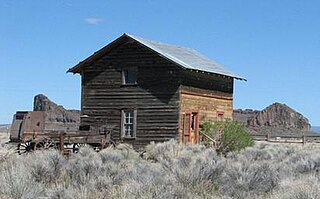
The Fort Rock Valley Historical Homestead Museum is located in Fort Rock, Oregon, United States. Opened in 1988, it is a collection of original homestead-era buildings including a church, school, houses, homestead cabins, and several other buildings assembled in a village setting. The structures were moved to the museum site from various locations around the Fort Rock Valley, named for volcanic landmark Fort Rock. Most of the buildings contain historic items used by local homesteaders including furniture, dishes, household products, and tools. The museum is open for self-guided tours from mid-March through September.
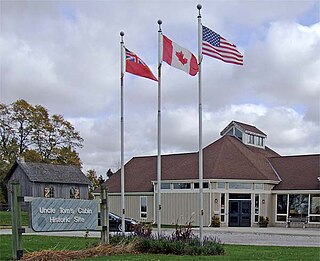
The Josiah Henson Museum of African-Canadian History is an open-air museum in Dresden, Ontario, Canada, that documents the life of Josiah Henson, the history of slavery, and the Underground Railroad. The historic site is situated on the grounds of the former Dawn settlement established by Henson; a former slave, abolitionist, and minister. Through his autobiography, The Life of Josiah Henson, Formerly a Slave, Now an Inhabitant of Canada, as Narrated by Himself, he served as the inspiration for the title character in Harriet Beecher Stowe's Uncle Tom's Cabin.
The New Sweden Farmstead Museum was an open-air museum in Bridgeton, New Jersey, United States. A recreation of a 17th-century Swedish farmstead, it was located in City Park, and served as a historical remembrance of the history of the Swedish and Finnish people who arrived as part of the colony of New Sweden in early America. Originally opened in 1988, it operated as a living museum for many years. As funding and attendance declined, the log buildings at the complex fell into disrepair, requiring it to close.
The Pioneer Log Cabin Museum is a historical log cabin located in Cassopolis, Michigan, built in 1923. It was originally conceived as a temporary structure for the Pioneer Day Picnic by Charles Harmon, then Secretary of the Cass County Pioneer Society. 146 logs of various species were hauled on April 4, 1923, and construction began on May 23. Children were given the day off of school, and the Cassopolis Military band led a parade down South Broadway Street to Stone Lake, where the cabin was to be sited. A crew of forty six built the cabin. Each log had a serial number painted on the end which corresponded to the donor list. The cabin was dedicated on Pioneer Day: June 20, 1923.
Boone County Historical Society was established in 1924. Located in Columbia, Missouri, United States, the Boone County Historical Museum has been collecting, preserving and exhibiting artifacts and records of the people of Boone County, Missouri.
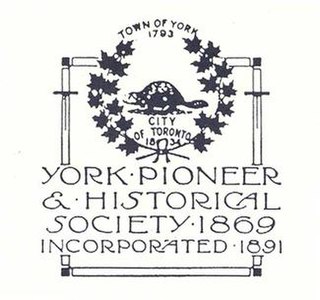
The York Pioneer and Historical Society (YPHS) is Ontario's oldest historical society, and the second-oldest historical society in Canada. It is located in Toronto and operates Scadding Cabin during the Canadian National Exhibition, publishes the York Pioneer journal, and participates in Toronto historical preservation projects.


























